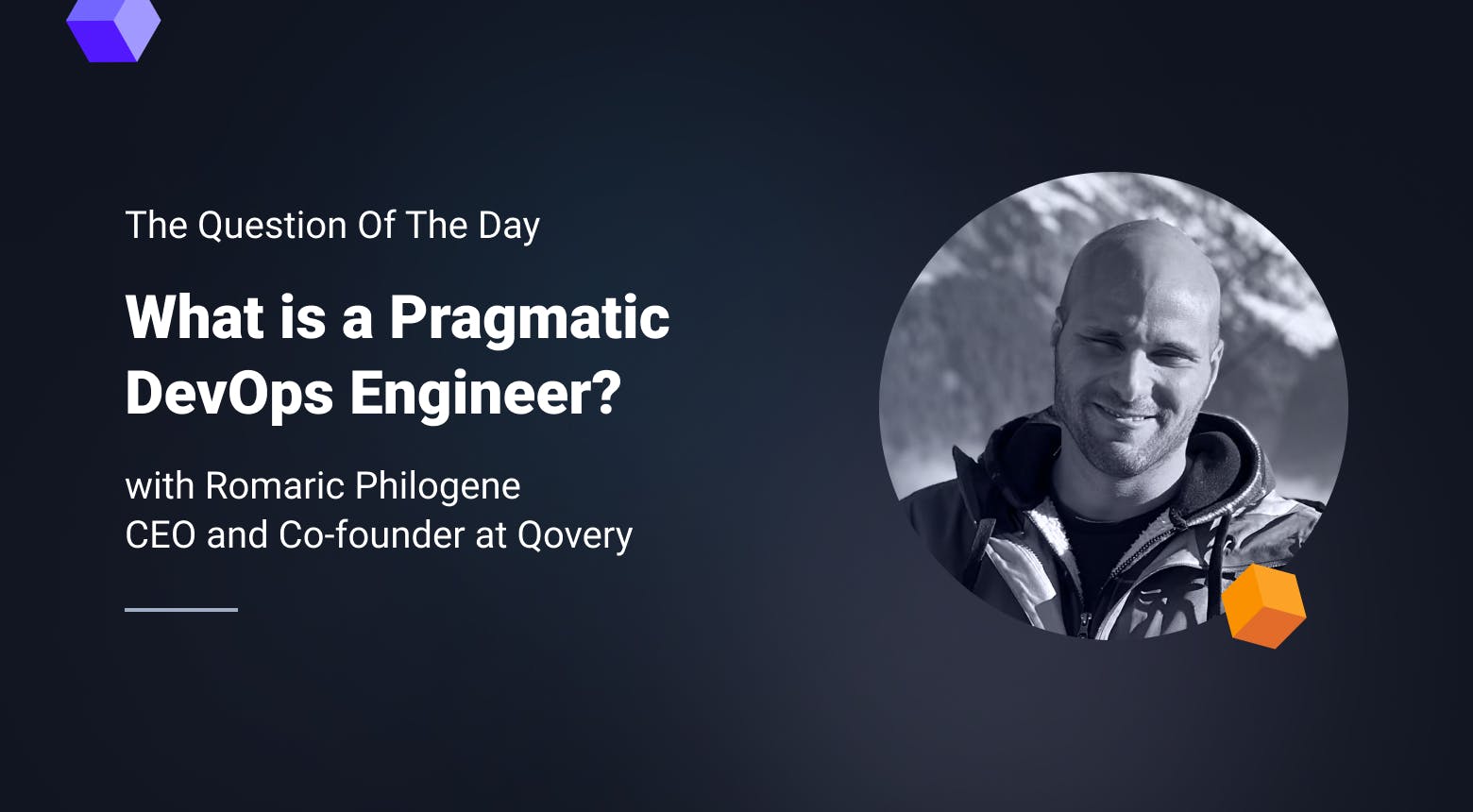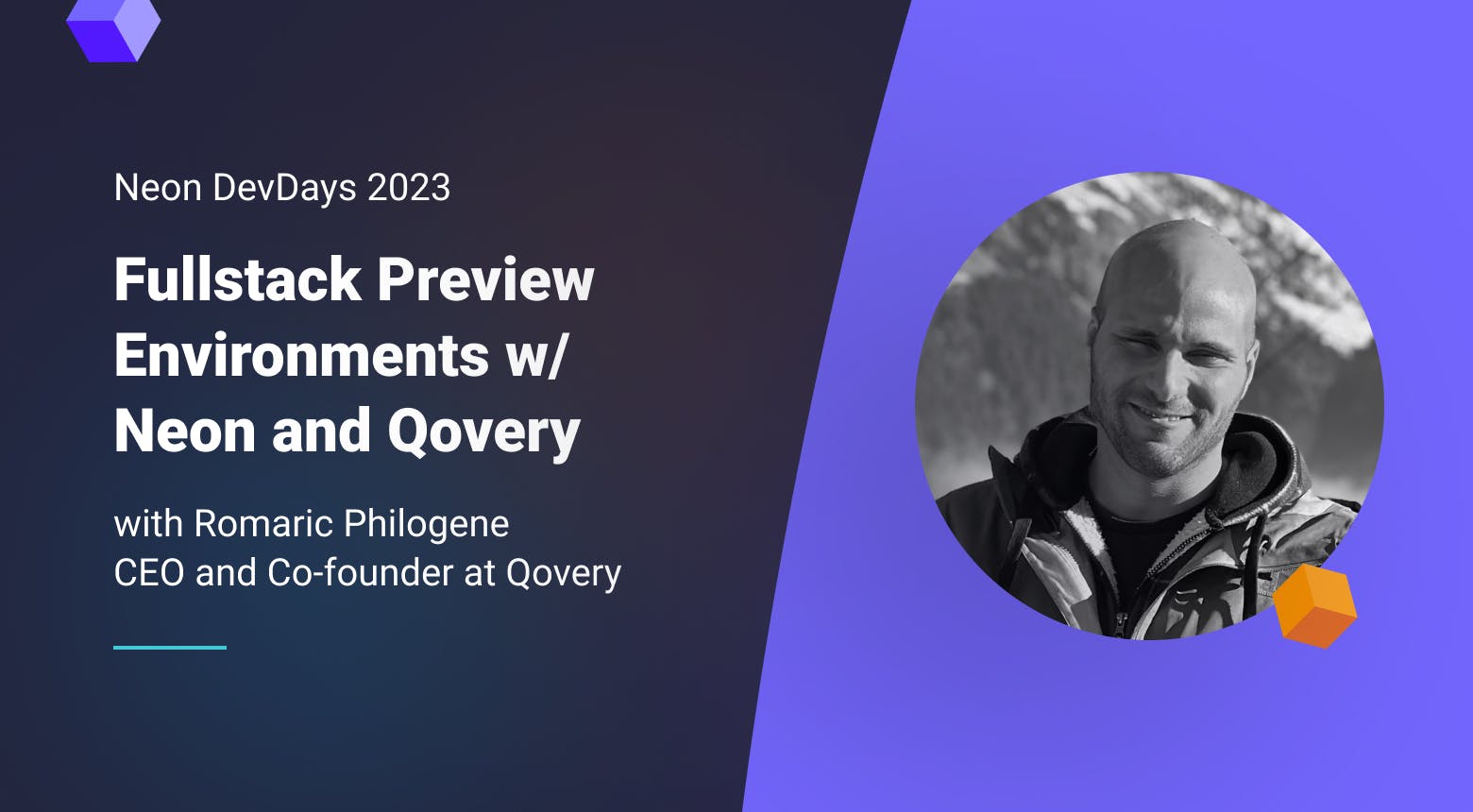Creating Ephemeral Environments for CI/CD Pipelines with Kubernetes
In the swiftly evolving tech world, the need for agile and efficient development processes is paramount. This was the essence of our enlightening event, "Creating Ephemeral Environments for CI/CD Pipelines with Kubernetes," which garnered an impressive turnout of over 650 attendees. The event, now available on Youtube, focused on the transformative potential of ephemeral environments in modern CI/CD pipelines.

Romaric Philogène
November 10, 2023 · 5 min read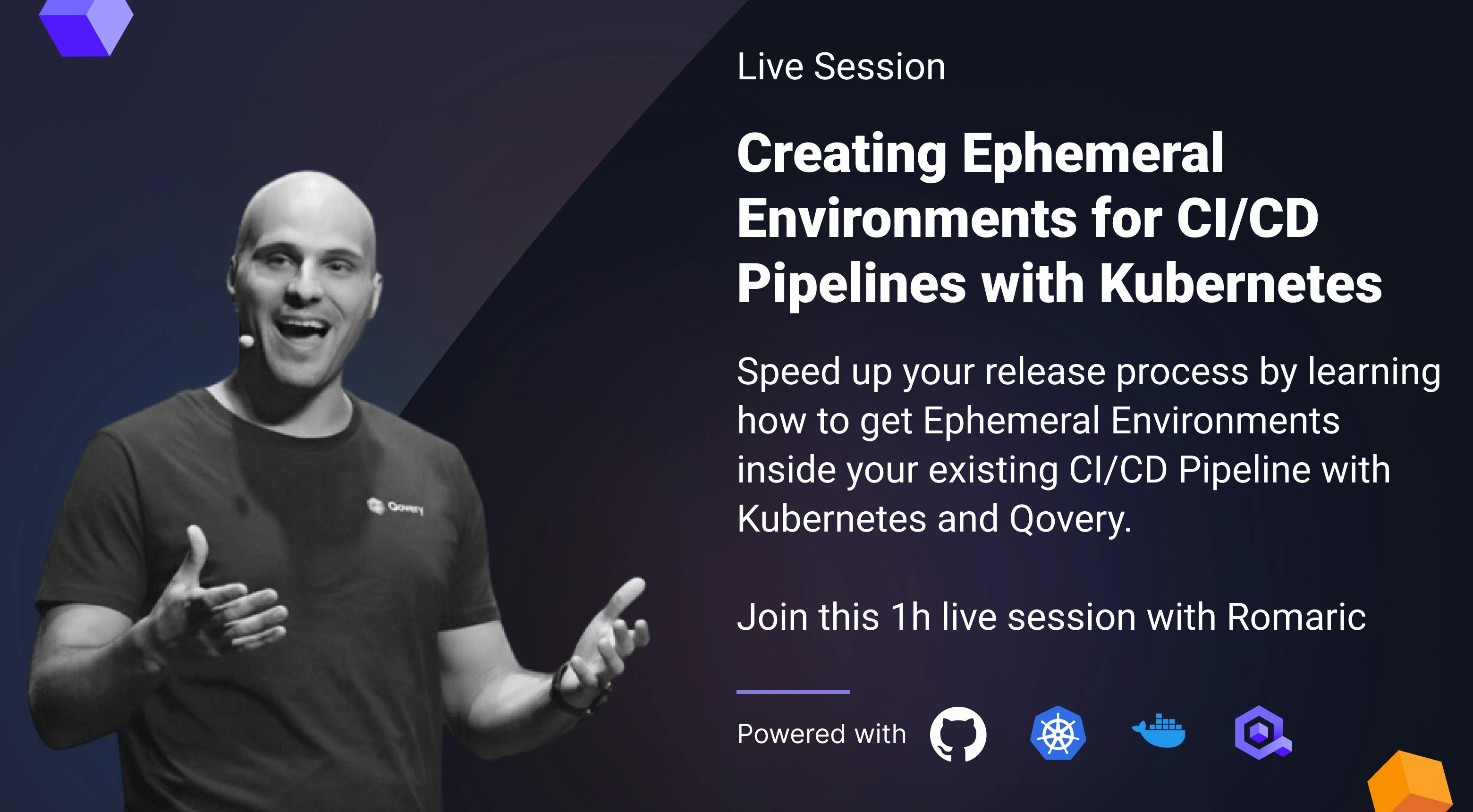
Get all the slides of the event here.
#Unveiling the Power of Ephemeral Environments
The event began with an in-depth look at ephemeral environments, highlighting their role as dynamic, isolated platforms for testing code branches before integration.

Our slide deck provided a comprehensive overview, laying the groundwork for further discussion. As mentioned in the slide, I recommend this article to get a great introduction to the Ephemeral Environment subject.
#Diverse Use Cases and Real-World Scenarios
Our journey continued with an exploration of the versatile applications of ephemeral environments. From testing individual pull requests to facilitating comprehensive end-to-end testing, the presentation, enriched with real-world examples, illuminated the substantial benefits these environments bring to the development lifecycle.

Here are detailed use cases of Ephemeral Environments that I covered during the talk:
#1. Testing Environments for Each Pull Request
- Purpose: To create an isolated environment for testing every new feature or bug fix.
- How It Works: When a developer opens a pull request, an ephemeral environment is automatically spun up. This environment is an exact replica of the production environment but isolated, ensuring that changes can be tested in a real-world scenario without impacting the main application.
- Benefits: This allows for thorough testing of changes in a controlled environment, leading to higher code quality and fewer bugs in production.
#2. Benchmarking Environments
- Purpose: To assess the performance of new features or changes under varying loads and conditions.
- How It Works: An ephemeral environment is set up to mirror the production setup, where new code or features are deployed to evaluate performance metrics like response time, throughput, and resource utilization.
- Benefits: This provides valuable insights into how changes will perform in the production environment, helping to optimize for better performance.
#3. End-to-End Testing Environments
- Purpose: To conduct comprehensive testing, covering all aspects of the application from start to finish.
- How It Works: Ephemeral environments are used to replicate the production setup, allowing testers to execute end-to-end tests, including user experience, integration, and system testing.
- Benefits: Ensures that the application works seamlessly in its entirety, detecting issues that might only surface when all components work together.
#4. Environment for Hotfixes and Emergency Patches
- Purpose: To quickly address critical bugs or security patches in a production-like setting.
- How It Works: In case of urgent fixes, ephemeral environments are rapidly deployed to test the patches before they are applied to the production environment.
- Benefits: Minimizes downtime and the risk of introducing new issues while resolving urgent problems.
#5. Training and Onboarding Environments
- Purpose: To provide a realistic setting for training new developers or onboarding team members without risking the production environment.
- How It Works: New developers are given access to these temporary environments where they can experiment and learn the application's workflow and codebase without any real-world implications.
- Benefits: Accelerates the learning curve for new team members while safeguarding the integrity of the main codebase.
#6. Demo Environments for Stakeholders
- Purpose: To demonstrate new features or updates to stakeholders or clients in a live setting.
- How It Works: Ephemeral environments are created to showcase a specific feature or the state of the application at a certain point in development. These are often used in presentations or sales pitches.
- Benefits: Stakeholders get a realistic understanding of the new features, enhancing communication and feedback.
#Navigating Challenges and Solutions
Addressing the challenges associated with ephemeral environments was a key focus of our presentation.
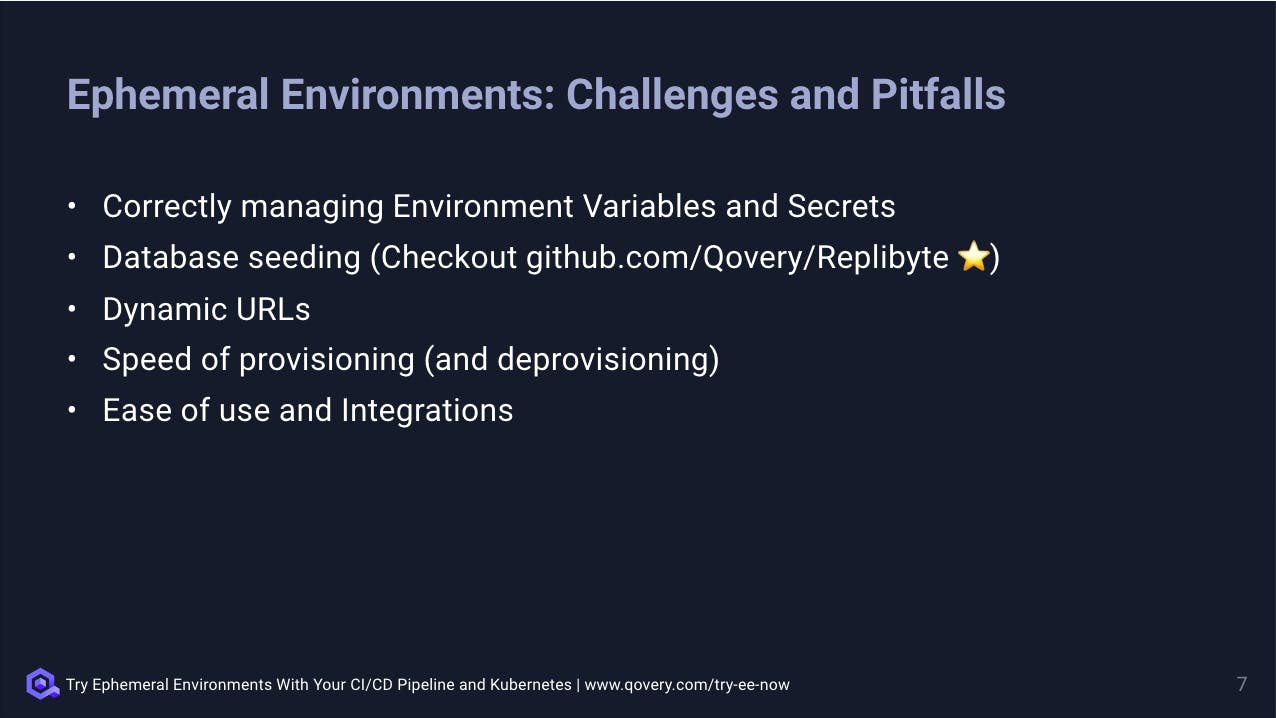
We tackled issues such as managing environment variables and dynamic URLs, offering practical solutions and underscoring the importance of a solid infrastructure and streamlined processes.
#Before Live Demo: Setup Review
We spent 10 minutes reviewing the setup of our Ephemeral Environment pipeline. From GitHub Actions (CI) to Qovery and Kubernetes. Here is how we implemented our Ephemeral Environment pipeline.
#Creating an Ephemeral Environment when a PR is opened
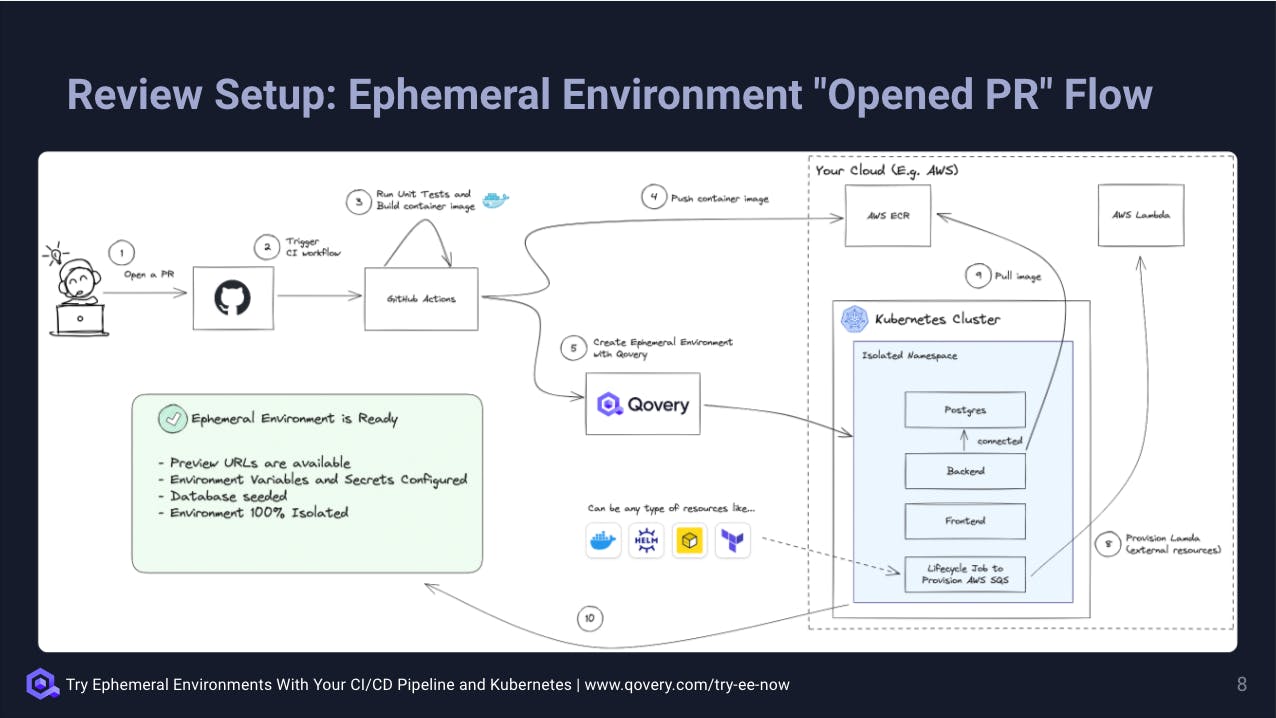
This slide presents the workflow triggered when a Pull Request (PR) is opened:
- Trigger: The PR opening acts as a trigger.
- CI/CD Pipeline Activation: Integration with CI tools (like Jenkins, CircleCI, GitHub Actions) to start the deployment process.
- Ephemeral Environment Creation: Details on Qovery and Kubernetes are used to create an isolated environment where the changes in the PR can be tested.
- Feedback Loop: Mechanisms for providing feedback on test results, code quality, etc., back to the developer.
#Destroying an Ephemeral Environment when a PR is closed
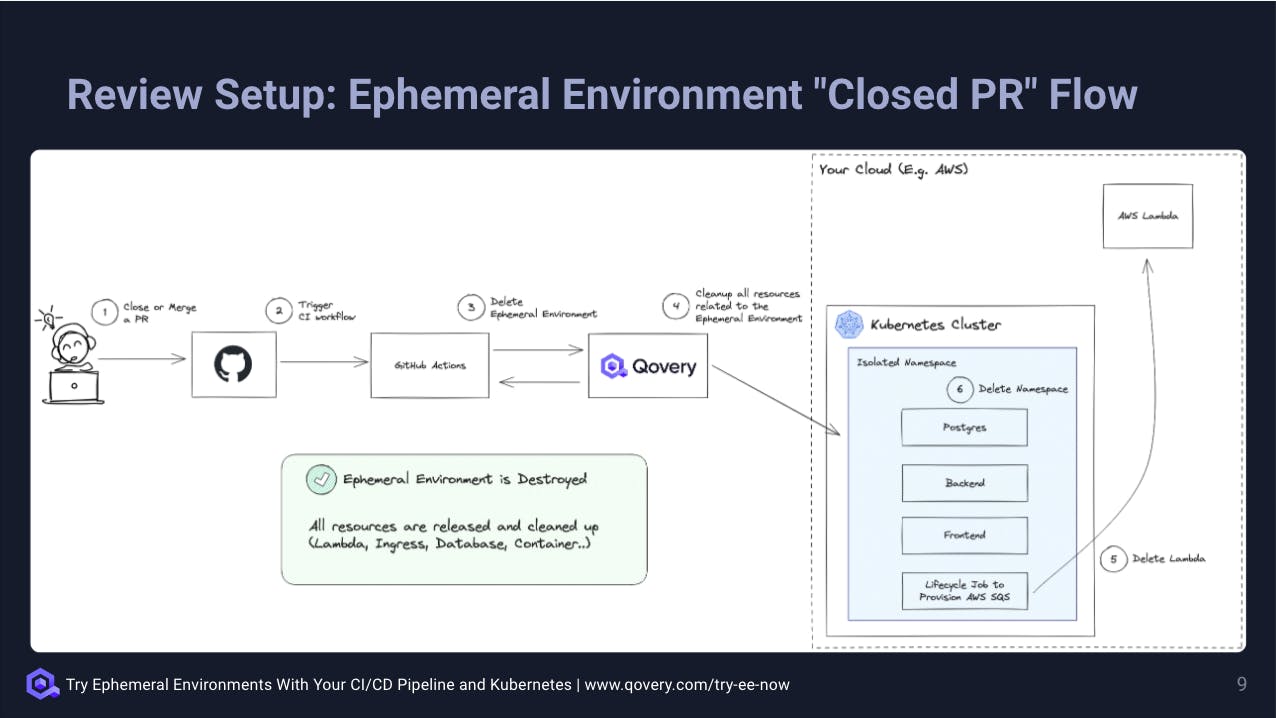
This slide focuses on the process that occurs when a PR is closed (or merged):
- Trigger: Closing of the PR.
- Environment Shutdown: Automated deprovisioning of the Kubernetes resources used for the ephemeral environment.
- Resource Cleanup: Steps showing how resources are cleaned up and freed, ensuring efficient resource utilization.
#A Deeper Look at Kubernetes

This slide offers an in-depth look at how Kubernetes is utilized in managing ephemeral environments by Qovery
#Bringing Concepts to Life: Live Demonstration
A live demonstration of creating ephemeral environments using Qovery, GitHub Actions, and Kubernetes was the centerpiece of our event.
This practical application illustrated the simplicity and speed of deploying and decommissioning these environments, providing attendees with a clear, actionable example.
#Engaging Q&A Session
The event wrapped up with an interactive Q&A session, where attendees' curiosity led to insightful exchanges. Key questions and answers included:
#Is Qovery similar to ArgoCD?
While both tools are used in Kubernetes environments, Qovery offers a broader platform, simplifying cloud infrastructure management for developers, unlike ArgoCD's focus on continuous delivery.
#Qovery vs. OpenShift: What Sets Them Apart?
Qovery stands out from OpenShift by providing a more developer-centric experience, minimizing the complexities of Kubernetes, thereby allowing developers to focus more on coding and less on infrastructure management.
#Flexibility in Cloning Environments
Qovery's cloning feature offers flexibility, allowing developers to add or remove pods in cloned environments, tailoring them to specific testing or staging needs.
#In Conclusion
Our event successfully demonstrated the significance of ephemeral environments in CI/CD pipelines, demonstrating their practicality and efficiency. The engaging discussions and high level of interest from the community underscore the growing relevance of these tools in modern software development. For those who missed the live event, the full recording is available here, offering a chance to witness the insightful presentations and discussions.
#Resources
Here are some resources:
- Try Qovery Ephemeral Environments for free here.
- GitHub Actions example
- Record on Youtube
- Record on Loom
- Record on Linkedin
Your Favorite DevOps Automation Platform
Qovery is a DevOps Automation Platform Helping 200+ Organizations To Ship Faster and Eliminate DevOps Hiring Needs
Try it out now!

Your Favorite DevOps Automation Platform
Qovery is a DevOps Automation Platform Helping 200+ Organizations To Ship Faster and Eliminate DevOps Hiring Needs
Try it out now!
